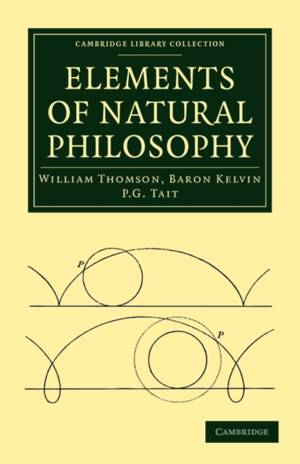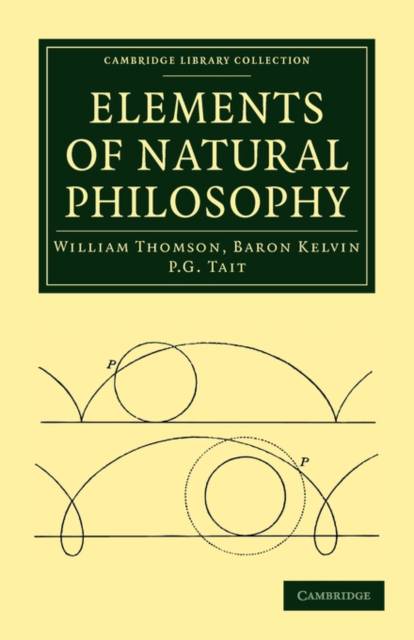
- Afhalen na 1 uur in een winkel met voorraad
- Gratis thuislevering in België vanaf € 30
- Ruim aanbod met 7 miljoen producten
- Afhalen na 1 uur in een winkel met voorraad
- Gratis thuislevering in België vanaf € 30
- Ruim aanbod met 7 miljoen producten
Zoeken
€ 70,95
+ 141 punten
Omschrijving
In 1867, Sir William Thomson (later Lord Kelvin) and Peter Guthrie Tate revolutionised physics with the publication of their Treatise on Natural Philosophy, in which they demonstrated the centrality of energy conservation to systems of dynamic movement. Popularly known as 'T&T' for its authors' initials, the Treatise became the standard textbook on natural philosophy, introducing generations of mathematicians to the 'new energy-based dynamics'. In Elements of Natural Philosophy (1873), they distil the portions of the Treatise not requiring higher calculus into a primer suitable for use in university courses. The first half covers the basic principles of kinematics and dynamics, including the motion of points, lines, and volumes, while the second half concerns questions of 'abstract dynamics', including particle attraction. The result of one of the most important collaborations in modern physics, this book remains a thorough introduction to the major principles of Thomson and Tait's larger work.
Specificaties
Betrokkenen
- Auteur(s):
- Uitgeverij:
Inhoud
- Aantal bladzijden:
- 296
- Taal:
- Engels
- Reeks:
Eigenschappen
- Productcode (EAN):
- 9781108014489
- Verschijningsdatum:
- 10/06/2010
- Uitvoering:
- Paperback
- Formaat:
- Trade paperback (VS)
- Afmetingen:
- 140 mm x 216 mm
- Gewicht:
- 376 g

Alleen bij Standaard Boekhandel
+ 141 punten op je klantenkaart van Standaard Boekhandel
Beoordelingen
We publiceren alleen reviews die voldoen aan de voorwaarden voor reviews. Bekijk onze voorwaarden voor reviews.











